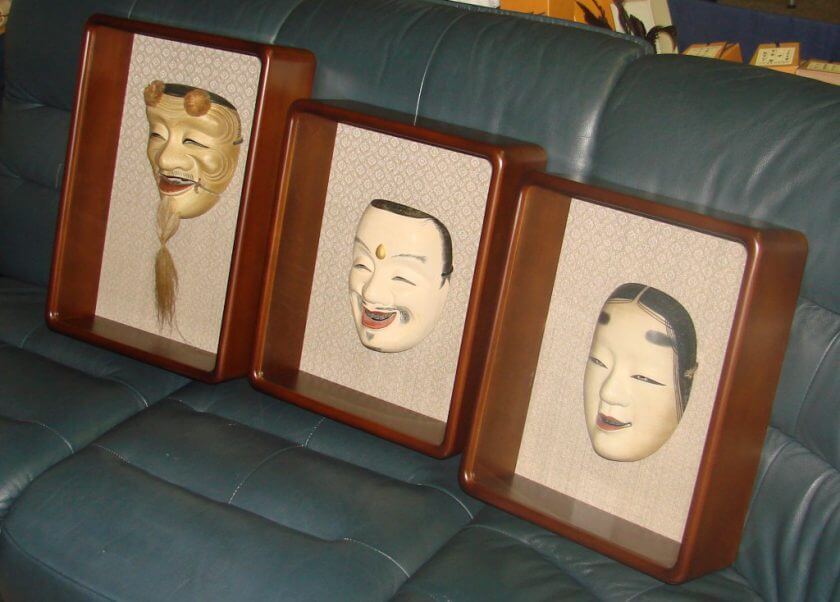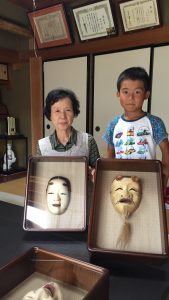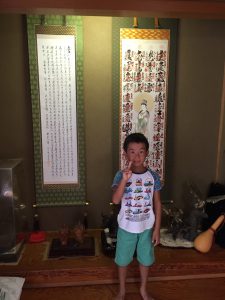Noh Masks / Heart Sutra
No Mask Flamed
“Is it possible to display a mask in a frame ?”
Our client occasionally asks us such a question.
This time, we were requested by a lady to frame Noh masks which had been inherited for generations through her family. In order to put masks into frames, we have to make frames three-dimensional so that they have enough depth and height to fit the masks in. After negotiating with our frame manufacturer over and over, we finally made it! Please see the finished products as below.


Heart Sutra Mounting into Kakejiku Scroll
While we were at Noh masks, she also requested us for making a hanging scroll. The main work was about “*Heart Sutra” (Hannya Shingyou), which had been hand-written by her grandfather but unfortunately remained unmounted for years. She wanted to save it and take good care of the work for her grandfather’s sake. What touches us most is such pure and kind heart that our clients have.
*Heart Sutra: The Heart Sutra is a famous sutra in Mahayana Buddhism. The text is very short, only 262 words. It is believed that people can accumulate merits by copying the word-for-word sutra transcription.
Delively
When we delivered these finished works to her, she was very satisfied with them and kindly said “It is exactly what I expected from you. Nicely done!” We were very flattered.

You can see the fabrics of Heart Sutra hanging scroll goes well with the next one and two hanging scrolls complements her tokonoma (the alcove) perfectly. She told us that she could not wait for future Buddhist memorial services. There, she will be able to appreciate this hanging scroll with her family & relatives. Her grandson gave us nice smile with v sign.

We hope everyone would leave their precious memento to their descendants like this time.
Thank you very much for reading.

